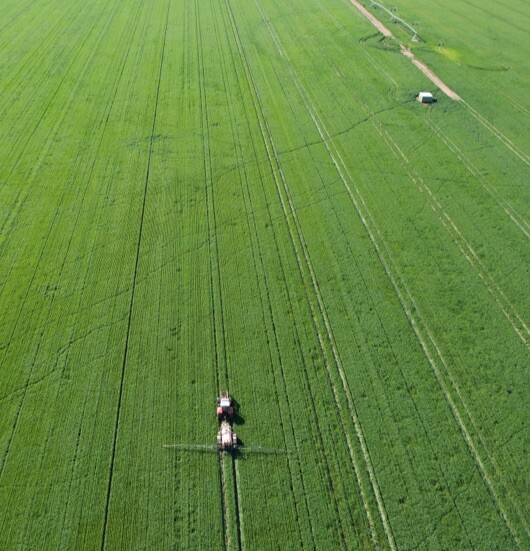Pesticide resistance – is it on your radar?
This article raises the issue of pesticide resistance and considers what we can do as farmers to prevent it developing in our systems.

Key messages
- Use pesticides judiciously to prevent resistance developing
- Use a range of strategies to manage pest populations
- Consider resistance testing on suspect populations
While we might defer a lot of our pesticide management decisions to our advisors, as farm business managers (and spray applicators), we ultimately have the final say in what goes onto our paddocks and when.
With spring fungicide programs getting underway, and weed seed set not too far off, we think it's timely to raise the issue of pesticide resistance and what we can do as farmers to prevent it in our systems.
Where are we at?
In Australia there are nearly 50 weeds that are resistant to one or more herbicide mode of action groups, with a number of these found in cropping systems. For fungicides, several pathogens have been confirmed or suspected as resistant (including in barley), while insecticide resistance has evolved in several grain pests including cotton bollworm, diamondback moth, green peach aphid and red legged earth mite (Source: Crop Life).
There’s also a much longer list of pests that are at risk of developing resistance, highlighting its significance to the industry.
What causes resistance?
In any population of weeds/pathogens/insects, there’s likely to be a small number that are naturally resistant to a pesticide due to genetic diversity. While most individuals are killed when a pesticide is applied, the naturally resistant ones survive and can multiply. Over time this can lead to a build-up of the resistant population, especially if the same herbicide/fungicide/insecticide is applied repeatedly, or the same mode of action used (cross resistance occurs when a population is resistant to two or more modes of action).
Once a population becomes resistant, famers need to find alternative strategies, which might be more expensive, time consuming/complicated to apply, or not as effective. For this reason, it makes sense to stop resistance developing, as opposed to trying to manage it after the fact.
Tips to help lower the risk
- Ensure the weed/disease/insect is identified correctly so that the best pesticide is selected for the job (seek expert advice for tricky IDs) and understand the pest lifecycle to ensure the timing of the pesticide application is effective
- Know your target density for economic control; this will prevent the pest getting out of hand and reduce the pressure on the pesticide to control high populations
- Rotate chemical groups: the more often a pesticide is applied the higher the selection pressure and the risk of resistance developing
- Follow label recommendations, including the application interval, and use robust application rates to ensure target pests are properly controlled.
- Don’t be tempted to reduce rates to save on costs or for convenience; this could lead to fewer pests being killed while selecting for more tolerant individuals and could come back to haunt later if resistance develops
- Rotate crops & control the green bridge to prevent pest build up
- Ensure adequate spray coverage and that plants aren’t stressed at application from frost, nutrient deficiencies, waterlogging or drought
- Integrated Pest Management (IPM) strategies combine biological, cultural, physical and chemical controls, rather than relying on a single strategy, and can lead to higher effectiveness overall. Consider beneficial/predator species, using strategic cultivation, canopy management and seeding (i.e. time of sowing, rate and variety) strategies for suppression and control, as well as harvest weed seed control, hay cutting, and green or brown manuring as weed management tools.
- Use summer fallow and a combination of pre and post emergent herbicide options to control suspect herbicide resistance weeds.
- If a spray failure occurs, do not re-spray with the same pesticide/mode of action as this will increase the selection pressure.
Do you do suspect resistance?
If you suspect resistance, the best option is to test. This provides a yes/no result to help determine the most cost-effective way forward for your system.
For suspected herbicide resistant weeds, a Quick Test usually takes around 4 weeks and involves sending green plants (between seedling and advanced tillering) away for testing in a cabinet sprayer, while a Seed Test takes longer (8- 12 weeks), with seed collected around maturity.
There are a variety of resistance screening programs operating across Australia. For further information, talk to your agronomist or visit your state’s biosecurity website.
Further reading
Author
NEWS
Keep up to date with the latest news from across the Riverine Plains.
-
Livestock
-
People
-
Grains
-
Sustainability

